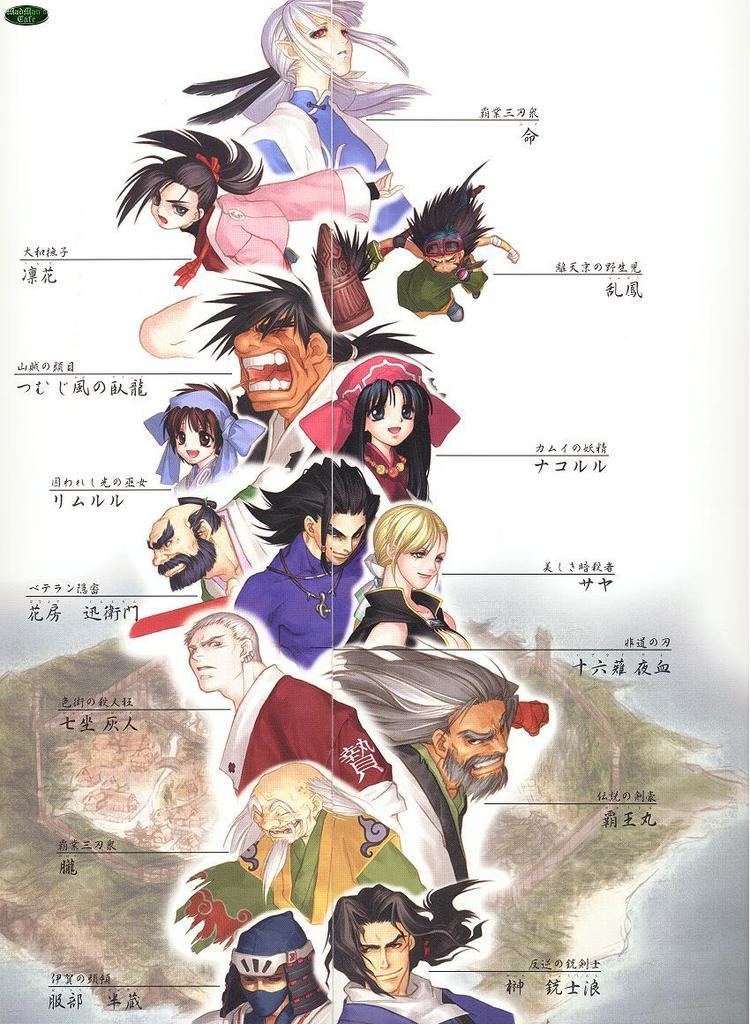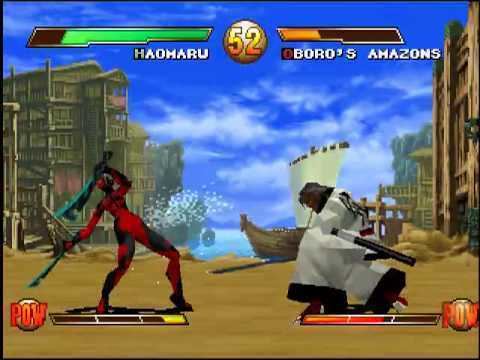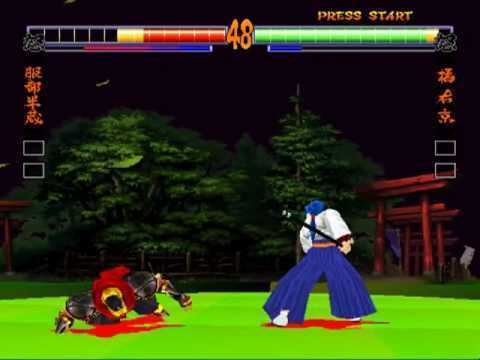4.8 /10 1 Votes
6/10 IGN | 3.7/10 GameSpot Initial release date 22 December 1999 Publisher SNK | |||||||||||||||||||||||||||||||||
 | ||||||||||||||||||||||||||||||||||
Mode(s) Up to 2 players simultaneously Similar SNK games, Fighting games | ||||||||||||||||||||||||||||||||||
Samurai shodown warriors rage gameplay story mode playstation psx
Samurai Shodown: Warriors Rage, known as New Chapter of Samurai Spirits, Strange Tale of the Swordsman: Revival of the Blue and Red Blade (~サムライスピリッツ新章~剣客異聞録 甦りし蒼紅の刃, ~Samurai Supirittsu Shinshō~ Kenkaku Ibunroku: Yomigaerishi Sōkō no Yaiba) in Japan, is the seventh game in SNK's Samurai Shodown series of fighting games. It was designed for the original Sony PlayStation console.
Contents
- Samurai shodown warriors rage gameplay story mode playstation psx
- Gameplay
- Plot
- Characters
- Release
- References

Gameplay

The first change to the earlier games was the improved character roster, which featured all new playable characters with two exceptions: Haohmaru and Hanzo Hattori, though Hattori is not actually the same man as in the earlier versions of the game. In previous versions, Hattori was Hanzo's son Shinzo, who assumed his name. Nicotine, Gaira, Nakoruru and Rimururu - characters from the previous game - not only play a role in the story, but also are presented as playable options.

Though the game still featured 3D, SNK sought to further diminish the role of the third dimension, with no movement along the Z-axis beyond a basic dodge. Two buttons control weak and strong slashes, a third controls kick attack, and the fourth is used for dodges.
The game introduces a new life bar system, which is subdivided into three sections. The first "round" of the fight lasts until one person was drained of all three sections, upon which one section of the bar would disappear and the remaining two would refill. Once those two were drained, the second section would be dropped, with the last one refilled. This was punctuated by a pause in the action, during which the other player would go through a taunt animation. The match was finally over when one player had been drained of this last section of life.
Plot
Taking place 20 years after the events of the original games, Samurai Shodown: Warrior's Rage has the player take the role of a warrior for hire who must stop an evil gang and rescue Rimururu.
Characters
Returning characters:
New characters:
Release
SNK gave the game an extremely similar English title to that of its predecessor, Samurai Shodown 64: Warriors Rage. This generated considerable confusion, and led many to the assumption that it was a port of the second Hyper Neo Geo 64 game. It was also released in relatively limited numbers outside Japan, as the gaming market was gearing up for the release of the PlayStation 2. This meant that few people had actually seen either game, therefore the title was the factor they were aware of. Even a cursory comparison between the two games reveals that they are two very different entities. To help eliminate confusion, Samurai Shodown: Warriors Rage is now frequently referred to in English-speaking circles as Warriors Rage 2, or SSWR2 for short.
